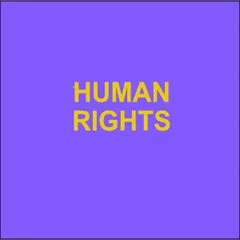By Victoria A. Greenfield, Tobias Sytsma, Amanda Kerrigan, Maya Buen
Forced labor—work performed involuntarily and under menace of penalty—occurs globally, with reports of abuses in all countries. About 28 million people—one in every 300 people worldwide—work against their will, bound through physical violence, threats, debt bondage, and other exploitative means. The United States has long imposed prohibitions on imports of goods made with forced labor—notably, under the Tariff Act of 1930 and the Uyghur Forced Labor Prevention Act of 2021 (UFLPA). The UFLPA targets China's extensive use of forced labor as a state-sponsored, coercive policy tool in the Xinjiang Uyghur Autonomous Region (XUAR), by barring U.S. imports of goods made in the XUAR or sourced from entities connected to it. Still, such goods flow through global supply chains. In 2021, the United States accounted for over one-fifth of the world's imports of goods that were at risk of being made with forced labor.The U.S. Department of Homeland Security (DHS), which leads trade enforcement under these laws, requested an analysis of trade enforcement and its impact. Researchers set out to (1) assist DHS in developing analytical capabilities for assessing the impact of its efforts to combat forced labor through trade enforcement and (2) evaluate the impact that DHS's actions and investments have had on meeting the goals of eliminating U.S. imports of goods made with forced labor and eliminating the use of forced labor globally. This report outlines the
researchers' methods for evaluating DHS's impact and presents findings on efforts and recommendations for strengthening enforcement.
Key Findings
DHS's impact in trade enforcement depends on stakeholders.
Trade enforcement is making measurable progress, but stakeholders are encountering impediments that DHS cannot address entirely on its own. U.S. businesses—and consumers—remain exposed to goods made with forced labor through indirect supply chain linkages with limited visibility.
Trade enforcement still holds value even if it, alone, cannot change China's policy on forced labor in the XUAR. Economic sanctions face inherent obstacles, but trade enforcement can help limit U.S. imports of goods made with forced labor, prevent U.S. complicity in other countries' labor abuses, and send a strong policy signal.
Trade enforcement comes with costs that can undermine its aims. U.S. businesses can incur costs from tracing supply chains, switching suppliers, and mitigating commercial disruptions; the environment could experience related harms; and China could retaliate and obfuscate.
DHS can track trade enforcement progress and unintended consequences, but it might be unable to know whether it is meeting its ultimate aims. Capturing broad effects on U.S. businesses, workers, and consumers; the environment; and global working conditions might be harder than capturing those on immediate goals for enforcement efforts.
DHS needs enough of the right resources and information to do its job, but stakeholders have suggested that it does not have them. Concerns about staffing included hiring, skills, burnout, and retention.
DHS and its stakeholders would benefit from more and higher-quality information. Better visibility into global working conditions, supply chain composition, the content of goods, and enforcement processes could strengthen trade enforcement.
Recommendations
Look for opportunities to encourage robust stakeholder participation by improving the flow and quality of information through greater transparency and improvements in tools, technology, and methods of data analysis.
Consider a more comprehensive approach to combating forced labor in global supply chains by working with other U.S. agencies and other countries to better leverage potential complementarities of economic sanctions and other types of measures.
Consider options for mitigating unintended consequences in concert with other U.S. agencies and with input from nongovernmental stakeholders, either by reducing them or responding to them, depending on their severity and likely prevalence.
Work with other U.S. agencies to monitor indicators of progress and unintended consequences over time to better understand how conditions are evolving.
Develop evidence with stakeholders to inform public debates on trade enforcement, including those on concerns about de minimis entries and environmental initiatives.
Continue to make the case for funding and staffing, which are critical resources for trade enforcement and are likely to need to increase.
Santa Monica, CA: RAND, 2025. 196p.





















